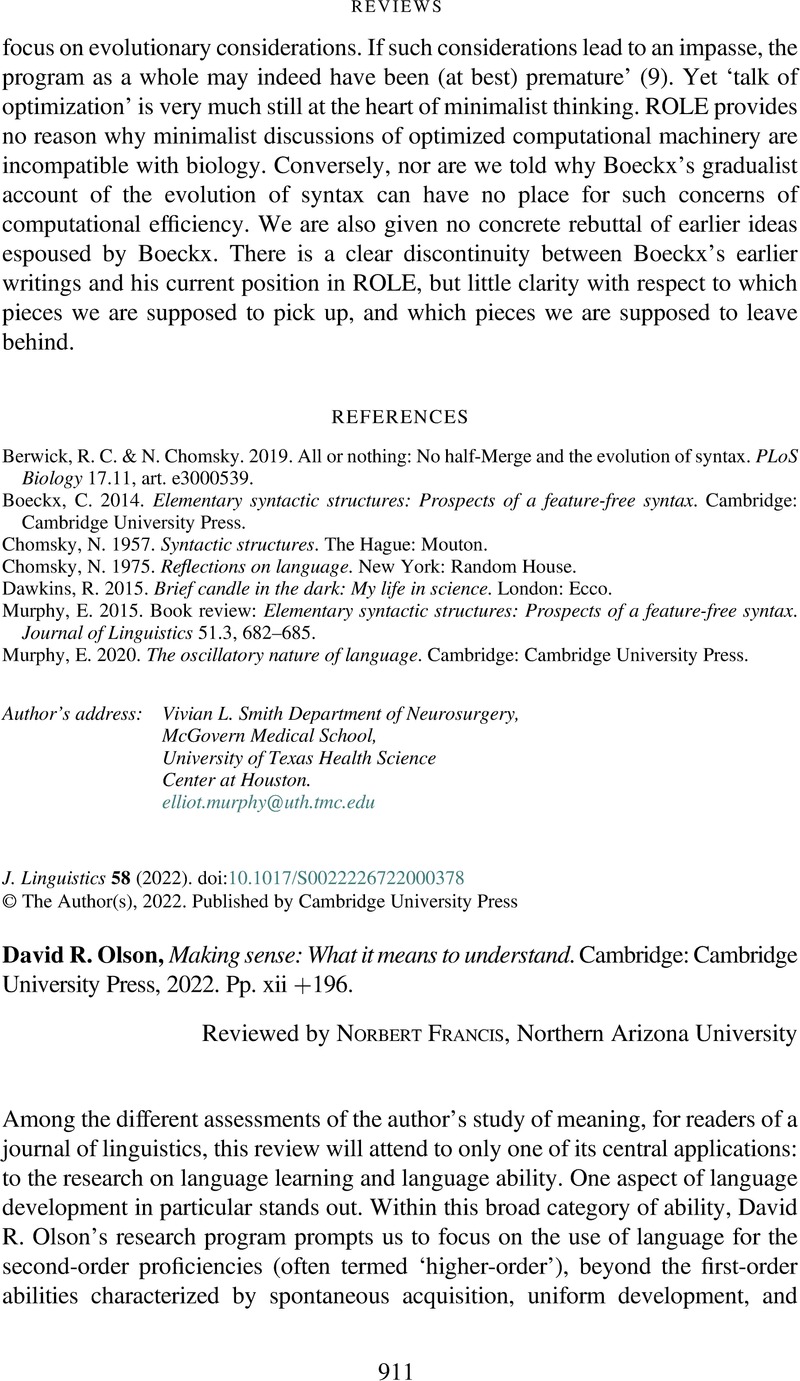No CrossRef data available.
Article contents
David R. Olson,Making sense: What it means to understand. Cambridge: Cambridge University Press, 2022. Pp. xii +196.
Review products
David R. Olson ,Making sense: What it means to understand. Cambridge: Cambridge University Press, 2022. Pp. xii +196.
Published online by Cambridge University Press: 30 August 2022
Abstract
An abstract is not available for this content so a preview has been provided. Please use the Get access link above for information on how to access this content.

- Type
- Reviews
- Information
- Copyright
- © The Author(s), 2022. Published by Cambridge University Press
References
REFERENCES
Foster, Susan. 1990. The communicative competence of young children: A modular approach. London: Longman.Google Scholar
Gagne, Deanna & Coppola, Marie. 2017. Visible social interactions do not support the development of false belief understanding in the absence of linguistic input: Evidence from deaf adult homesigners. Frontiers in Psychology 8, 1–21.CrossRefGoogle Scholar
Gee, John Paul. 1996. Social linguistics and literacies: Ideology in discourses. Hoboken, NJ: Taylor & Francis.Google Scholar
Gombert, Jean Émile. 1992. Metalinguistic development. Chicago: University of Chicago Press.Google Scholar
Miller, Scott. 2022. Advanced theory of mind. Oxford: Oxford University Press.CrossRefGoogle Scholar
Stanovich, Keith. 2011. Rationality and the reflective mind. Oxford: Oxford University Press.Google Scholar


